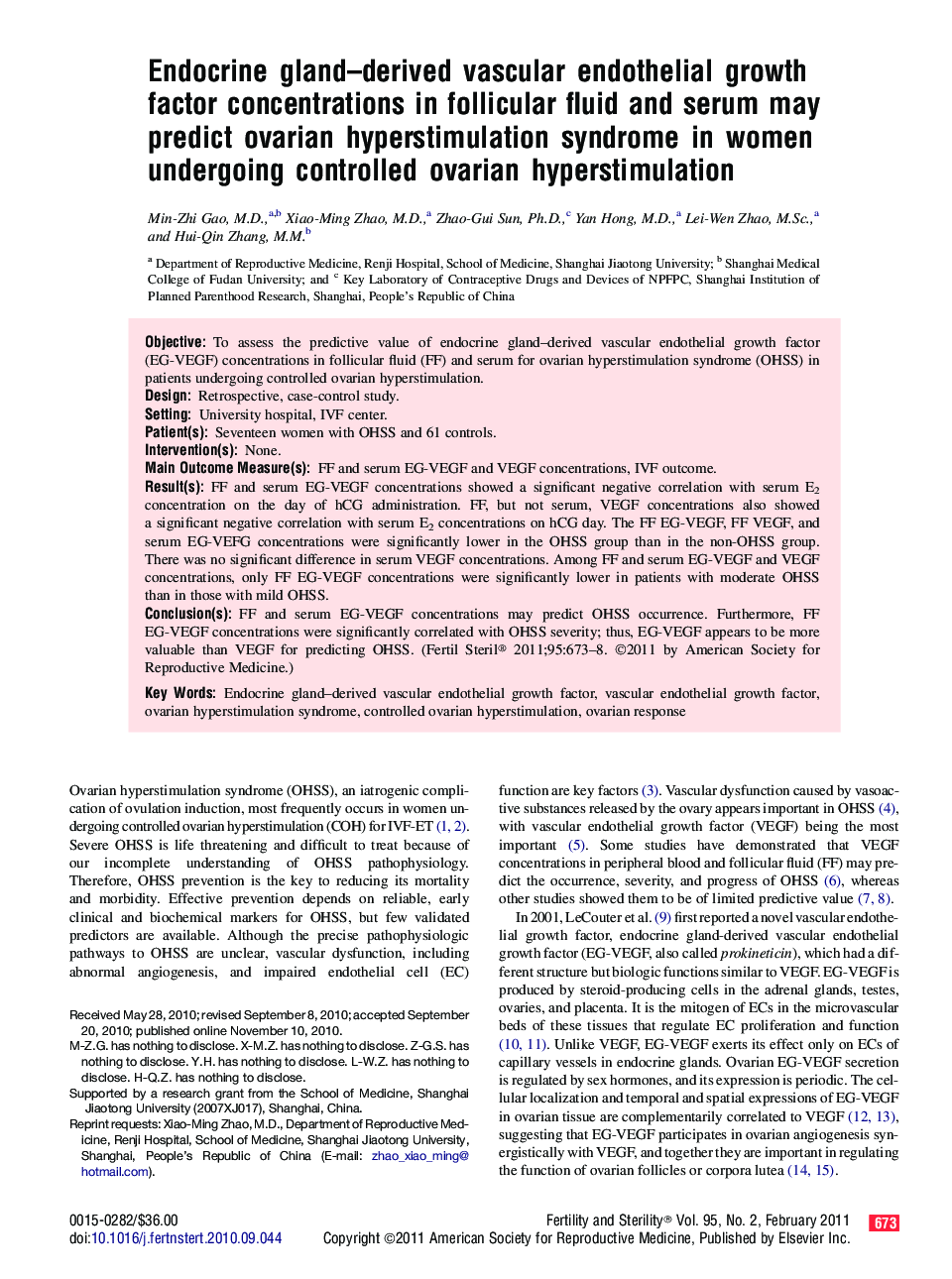| Article ID | Journal | Published Year | Pages | File Type |
|---|---|---|---|---|
| 3939564 | Fertility and Sterility | 2011 | 6 Pages |
ObjectiveTo assess the predictive value of endocrine gland–derived vascular endothelial growth factor (EG-VEGF) concentrations in follicular fluid (FF) and serum for ovarian hyperstimulation syndrome (OHSS) in patients undergoing controlled ovarian hyperstimulation.DesignRetrospective, case-control study.SettingUniversity hospital, IVF center.Patient(s)Seventeen women with OHSS and 61 controls.Intervention(s)None.Main Outcome Measure(s)FF and serum EG-VEGF and VEGF concentrations, IVF outcome.Result(s)FF and serum EG-VEGF concentrations showed a significant negative correlation with serum E2 concentration on the day of hCG administration. FF, but not serum, VEGF concentrations also showed a significant negative correlation with serum E2 concentrations on hCG day. The FF EG-VEGF, FF VEGF, and serum EG-VEFG concentrations were significantly lower in the OHSS group than in the non-OHSS group. There was no significant difference in serum VEGF concentrations. Among FF and serum EG-VEGF and VEGF concentrations, only FF EG-VEGF concentrations were significantly lower in patients with moderate OHSS than in those with mild OHSS.Conclusion(s)FF and serum EG-VEGF concentrations may predict OHSS occurrence. Furthermore, FF EG-VEGF concentrations were significantly correlated with OHSS severity; thus, EG-VEGF appears to be more valuable than VEGF for predicting OHSS.
